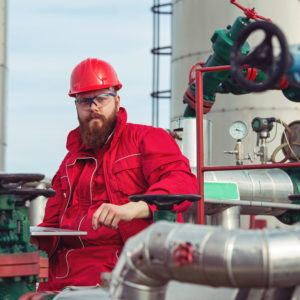Energy Transfer’s (ET) recent announcement that it will convert the Mariner East 1 pipeline to help transport refined products from the Midwest to Pennsylvania and the northeast will be a boon to both northeast energy consumers and midwest producers, industry analysts say.
“PA Access will utilize part of our Mariner East 1 pipeline to provide about 20,000 – 25,000 barrels per day of refined products from the Midwest supply regions through our Allegheny Access pipeline system into Pennsylvania and to markets in the Northeast,” the company said in November. The service will begin in the fourth quarter of 2020.
“This is a critical development that will allow ET…to move in either direction between Chicago and New York City,” Jude Clemente, an editor for Real Clear Energy and a Principal at JTC Energy Research Associates, told InsideSources. Mark that up as a win for domestic energy security. This move will strengthen the network of transport options available.
The increased access is a likely boon to Midwest refineries and suppliers, but also fills a void left by the recently closed Philadelphia Energy Solutions refinery.
“The reality is that the Midwest region has been producing more gasoline, for instance, than it requires, so this move gives ET much-needed flexibility,” Clemente said.
For the past few years, Mariner East 1 has transported ethane and propane from Ohio and Pennsylvania to the Marcus Hook Industrial Complex in Delaware County. The pipeline was first built in the 1930s and was converted to transporting natural gas liquids in 2015, with the other pipelines in the Mariner system nearing completion of construction and expected to be online soon. The new pipeline will share 80 percent of the same pipeline corridor as its predecessor, passing through 17 Pennsylvania counties.
“The portion of the 8-inch line that we’re converting that will be moving refined products,” said Energy Transfer Chief Commercial Officer Marshall McCrea, in early November.
“I suspect we could see more conversions like this move from ET and others because new greenfield builds are likely going to become more difficult to come by under a different administration and congress,” Clemente concluded.
On their November earnings call, McCrea said ET’s transport volumes were up significantly over the company’s Mariner East system from 2019.
“During the third quarter, we saw the highest average quarterly volumes yet through the Mariner East pipeline system with year to date 2020, NGL volumes up 40 percent, over a year to date 2019. Utilization of our Mariner pipelines and our Marcus Hook terminal continued to increase, leading to record amounts of propane transported through the pipeline, as well as strong butane and ethane utilization,” he said.
This serves as the most recent example for expanded pipeline infrastructure development in the Commonwealth. While new pipelines have been controversial, consumers have only increased their energy demands, which this project will help support.
“This project will require minimal capital, which is already included in our budget and will add significant revenue and synergies with our existing refined products pipeline and terminal assets,” said McCrea.
Energy infrastructure projects continue to be big economic drivers, even during the COVID downturn. The Mariner East pipeline system itself has generated tens of thousands of jobs and commerce opportunities. Continuing to build on that system as the company intends will stimulate refiners, producers and more in Pennsylvania and the Midwest. Mariner East is proving itself reliable, safe, and increasingly versatile for the ever-changing landscape.

